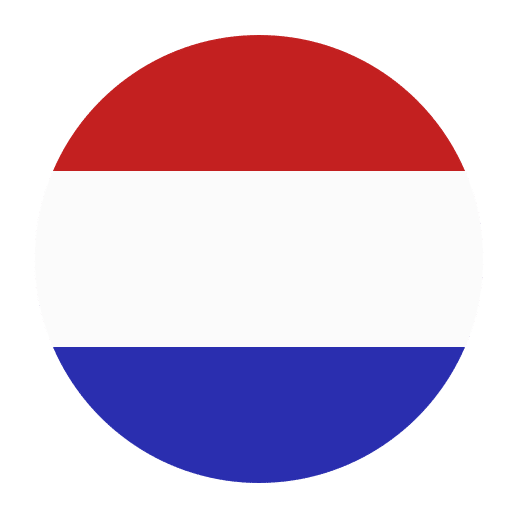Learning a new language can be a rewarding experience, opening doors to new cultures, friendships, and opportunities. Dutch, spoken in the Netherlands and parts of Belgium, is a particularly fascinating language due to its rich history and close relation to English. However, many people shy away from learning a new language due to the perceived cost involved. Fear not! You can learn Dutch effectively without breaking the bank. In this article, we’ll explore various methods, resources, and tips to help you learn Dutch on a budget.
Leveraging Free Online Resources
One of the most significant advantages of our digital age is the abundance of free online resources available for language learners. Here are some excellent options to consider:
Language Learning Apps
Duolingo: This is one of the most popular language learning apps and offers Dutch courses for free. Duolingo uses a gamified approach to make learning fun, with bite-sized lessons that focus on vocabulary, sentence structure, and pronunciation.
Memrise: Another great app that offers free Dutch courses. Memrise uses spaced repetition and mnemonic techniques to help you remember words and phrases. It also includes video clips of native speakers to help you with pronunciation and listening skills.
Anki: Anki is a flashcard app that uses spaced repetition to optimize your learning. You can find pre-made Dutch decks or create your own based on the vocabulary and phrases you want to learn.
Online Courses and Websites
Duolingo Stories: In addition to its regular courses, Duolingo also offers short stories that help you practice reading comprehension and listening skills. These stories are interactive, allowing you to answer questions and test your understanding as you go.
Open Culture: This website offers free Dutch language courses and resources, including links to textbooks, grammar guides, and audio lessons.
TAALhuis Amsterdam: TAALhuis provides free online Dutch lessons and resources. They offer exercises, grammar explanations, and vocabulary lists to help you learn at your own pace.
Youtube Channels
Learn Dutch with Bart de Pau: Bart de Pau offers a series of free video lessons on YouTube, covering topics from basic vocabulary to more advanced grammar. His clear explanations and engaging teaching style make learning Dutch enjoyable.
Easy Dutch: This channel provides videos with real-life conversations in Dutch, complete with subtitles in Dutch and English. These videos are great for improving your listening skills and learning how Dutch is used in everyday situations.
DutchPod101: DutchPod101 offers a wide range of video and audio lessons for free on their YouTube channel. They cover various aspects of the language, from vocabulary and grammar to culture and pronunciation.
Utilizing Free or Low-Cost Print Resources
While digital resources are incredibly convenient, don’t overlook the value of traditional print materials. Here are some budget-friendly options:
Libraries
Many local libraries offer language learning resources, including textbooks, grammar guides, and dictionaries. You can often borrow these materials for free or at a minimal cost. Some libraries also offer language learning programs or conversation groups that can help you practice speaking Dutch with others.
Secondhand Books
Check out secondhand bookstores, thrift shops, or online marketplaces like eBay and Amazon for used Dutch language books. You can often find textbooks, workbooks, and novels at a fraction of the cost of new ones.
Public Domain Books
Project Gutenberg and other public domain websites offer free e-books in Dutch. Reading these books can help you improve your vocabulary and comprehension skills while exposing you to Dutch literature and culture.
Immersing Yourself in the Language
Immersion is a powerful tool for language learning. By surrounding yourself with Dutch, you can accelerate your learning and gain a deeper understanding of the language. Here are some cost-effective ways to immerse yourself in Dutch:
Media Consumption
TV Shows and Movies: Watching Dutch TV shows and movies can help you improve your listening skills and familiarize yourself with the language’s rhythm and intonation. Websites like NPO Start offer free streaming of Dutch TV programs. You can also find Dutch movies on platforms like Netflix and YouTube.
Music: Listening to Dutch music is a fun way to immerse yourself in the language. Look for Dutch artists and bands on Spotify, YouTube, or other music streaming services. Pay attention to the lyrics and try to sing along to improve your pronunciation and vocabulary.
Podcasts and Radio: Dutch podcasts and radio stations can help you practice listening to the language in different contexts. Some popular Dutch podcasts include “Echt Gebeurd,” “De Taalstaat,” and “Man met de microfoon.” You can also listen to Dutch radio stations like NPO Radio 1 and Radio 538 online.
Language Exchange
Language Exchange Partners: Websites like Tandem, HelloTalk, and ConversationExchange can help you find language exchange partners who are native Dutch speakers. You can practice speaking Dutch with them in exchange for helping them with their English. This is a great way to improve your conversational skills and make new friends.
Local Language Meetups: Check out websites like Meetup.com or local community centers for language exchange groups or Dutch conversation meetups in your area. These events are often free or low-cost and provide a supportive environment for practicing your speaking skills.
Practicing Speaking and Writing
Speaking and writing are crucial components of language learning. Here are some budget-friendly ways to practice these skills:
Speaking
Practice with Friends or Family: If you have friends or family members who speak Dutch, ask them to practice with you. You can have simple conversations, play language games, or even cook a Dutch recipe together to make learning more enjoyable.
Record Yourself: Recording yourself speaking Dutch can help you identify areas for improvement and track your progress over time. Listen to your recordings and compare them to native speakers to work on your pronunciation and intonation.
Writing
Language Learning Journals: Keeping a journal in Dutch can help you practice writing regularly. Write about your day, your thoughts, or even create short stories. This will help you improve your vocabulary, grammar, and overall writing skills.
Online Writing Communities: Websites like Lang-8 and HiNative allow you to submit your writing for feedback from native speakers. You can also help others by providing feedback on their English writing. This mutual exchange can help you improve your writing skills and gain valuable insights from native speakers.
Setting Goals and Staying Motivated
Learning a new language requires dedication and persistence. Here are some tips to help you set goals and stay motivated throughout your Dutch learning journey:
Set SMART Goals
Setting specific, measurable, achievable, relevant, and time-bound (SMART) goals can help you stay focused and track your progress. For example, instead of setting a vague goal like “learn Dutch,” set a specific goal like “learn 50 new Dutch words in the next month.”
Create a Study Schedule
Establishing a consistent study schedule can help you stay on track and make steady progress. Allocate specific times each day or week for different aspects of language learning, such as vocabulary, grammar, speaking, and listening.
Celebrate Milestones
Recognize and celebrate your achievements along the way. Whether it’s completing a level on Duolingo, finishing a book in Dutch, or having your first conversation with a native speaker, acknowledging your progress can boost your motivation and confidence.
Stay Positive and Patient
Language learning can be challenging, but maintaining a positive attitude and being patient with yourself is essential. Remember that progress takes time, and it’s okay to make mistakes. Embrace the learning process and enjoy the journey.
Conclusion
Learning Dutch on a budget is entirely possible with the plethora of free and low-cost resources available today. By leveraging online resources, utilizing print materials, immersing yourself in the language, and practicing speaking and writing, you can make significant progress without spending a fortune. Remember to set goals, stay motivated, and enjoy the process of discovering a new language and culture. Happy learning!

